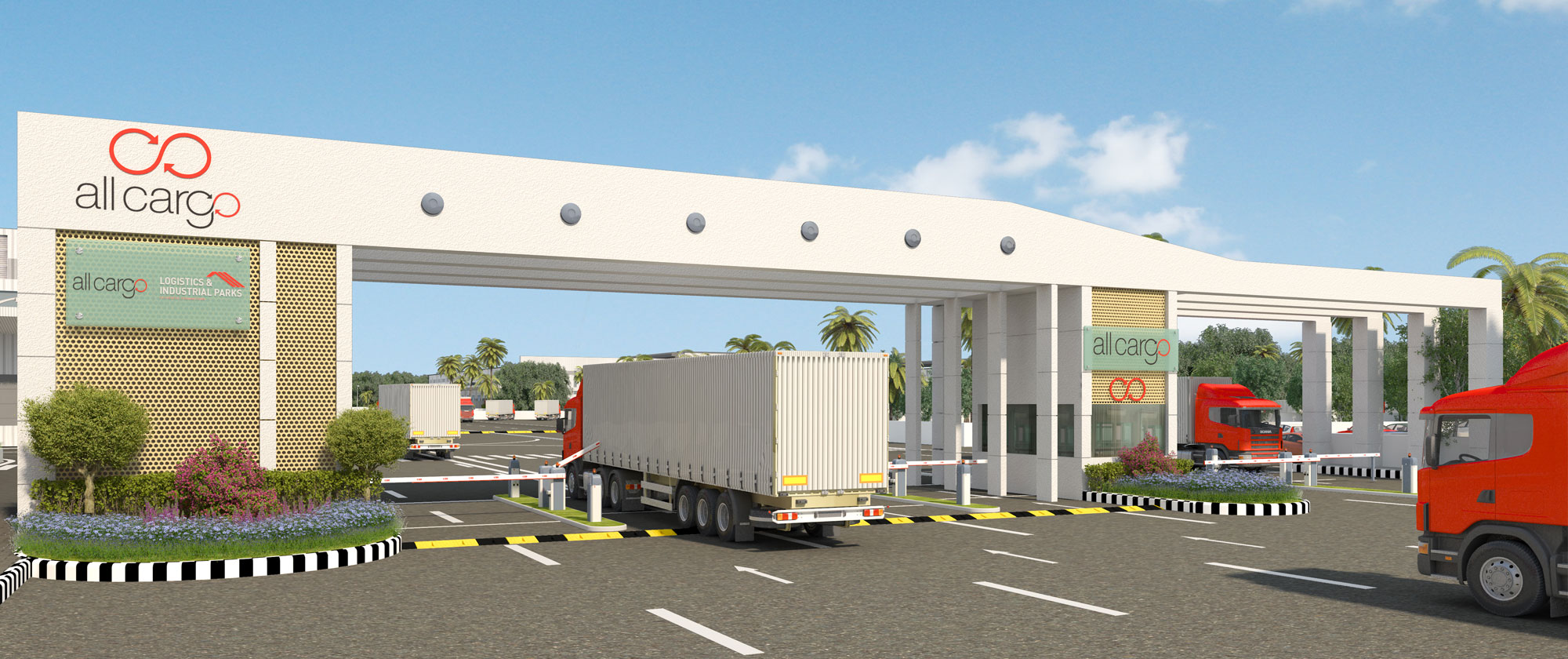The booming e-commerce market and a robust demand for the strengthening of retail value chains across industries, has bolstered the demand for Grade A warehousing facilities across the Indian subcontinent. Leveraging its strong project management and technology assets, Allcargo is catering to the needs of the growing consumer base in the sector by constructing state-of-the-art Grade A warehousing facilities which are built to maximise throughput and bolster the profitability of supply chains.
India is seen as a huge opportunity by global retail giants like Walmart, Amazon, Decathlon, etc. Increase in per capita income is just one of the factors that have triggered an increase in consumerism opening a plethora of opportunities for various industries. Even smaller industrial and manufacturing units are eyeing space in Grade A warehouses. Strengthening the supply chain by maximising the throughput of warehousing facilities has thus become integral to the profitability of enterprises. Demand for state-of-the-art Grade A warehousing has grown leaps and bounds in India with estimates predicting the construction of new facilities over 300 million square feet of land by 2022.
Several factors are responsible for driving the shift in demand from Grade B and Grade C warehouses to Grade A spaces. The drastic increase in demand can be attributed to the burgeoning cost of storage per square feet, implementation of stringent health and safety regulations, the need for high-operational efficiency, and better provisions of infrastructure and amenities for the people working in warehouses. Combined with the emergence of a domineering e-commerce industry, in addition to the enactment of a slew of government policies such as the roll-out of Goods and Services Tax (GST), development of industrial corridors, and assigning infrastructure status to the logistics sector have all laid the platform for fuelling investments into Grade A warehousing facilities.
Allcargo has already forayed into the segment and is developing Grade A warehousing facilities spanning over 6.5 million square feet across key cities in India. A total of 3.5 million square feet of warehousing space has already been constructed and leased out to e-commerce and retail giants.
Wonders of Grade A warehouses
Grade A warehouses are easily distinguishable from their Grade B and Grade C counterparts. The infrastructural capabilities that make Grade A facilities stand out are:
- Internal Roads: Internal roller compacted concrete or black topping roads are an essential component of Grade A warehousing facilities which enable the effortless movement of goods inside the space speedily. These roads are broad enough to allow movement of 40-feet containers easily.
- Storm Water Drain: Incessant rainfall can damage goods and cargo and ultimately derange the complete supply chain causing huge losses. Grade A warehouses have stormwater drain provisions that are put in place post the analysis of rainfall data from the past 50 years. This ensures the facilities have the required drainage system to keep goods away from harm’s length.
- Sufficiently High Compound Wall: Compound walls are outfitted with concertina wires and scaled to proper heights to prevent burglary and theft from warehouses.
- Parking and Driver Rest Areas: The installation of driver rest areas along with toilets as per industry norms and ample amount of parking space for cars, trucks, and bikes are necessary for Grade A warehouses.
- Environment Sustainability Measures: A key feature of Grade A warehouses are the environment-friendly measures taken to automatically incorporate sustainability in the day-to-day operations of the facility. Green belt creation along the perimeter of the facility along with provisions for rainwater harvesting, waste handling and recycling of STP treated water for landscaping are common environment sustainability measures taken in Grade A warehousing spaces.
- Sophisticated Fire Hydrant System and Electrical Infrastructure: Grade A warehouses are fully equipped with 100% power backup for external lighting and all the facilities inside the facility. Installation of the fire hydrant and sprinkler systems as per National Building Code (NBC) and Facility Management (FM) norms is necessary.
Besides these, Grade A warehouses are equipped with CCTV cameras for surveillance, sewage treatment plants, mechanised conveyors, loaders, and dockers, and state-of-the-art ventilation systems with ridge monitors and louvres.
Construction of Grade A warehouses – A complex art to master
The construction of Grade A warehouses involves managing a myriad of complex tasks. An array of factors is evaluated before finalising a location for the construction of the warehousing facilities. Explaining the importance of warehousing location, Mr. Ankur Minda, General Manager Land & Leasing, Allcargo Logistics, stated, “Deciding on a warehouse location is a significant decision that impacts every aspect of a business – finding a balance between a convenient location and a reasonable rent price is integral. The location of the warehouse directly contributes to the efficiency of the company as well as the overall customer experience.”
The following parameters are evaluated before identifying the location of Grade A warehousing:
Proximity to Various Linkages – Warehouses should be located at optimal distances from railway stations, airports, bus stands, etc., for the strategic transportation and storage of goods.
Existence of a Residential Eco-system – Warehouses need to be located in a vicinity where a proper residential ecosystem exists. This ensures that the staff members working at the warehousing facilities have easy access to the amenities required by them and their families.
Regulations – Each region has its own set of regulations that need to be thoroughly examined before setting up any warehousing facility. Many areas prohibit the storage of certain types of goods or construction of industrial buildings, making a detailed examination of the regulations an integral part of the process.
Workforce Availability – Manpower is a vital component for managing and construction of Grade A warehouses. An adequate supply of labour with a mixed skill set is required to facilitate hassle-free construction and management of warehouses.
Availability of Trucks and Material Handling Equipment – Grade A warehouses leverage sophisticated machinery which streamlines operations and enhances productivity. The availability of mechanised trolleys, fork-lifts, and heavy trucks plays a crucial role in ascertaining the area for the construction of these facilities.
The next step requires obtaining a range of permits for setting up a warehouse in the region. “Every state has different norms and sets of approvals for warehousing. On average there are about 15 approvals which are to be procured by a developer to construct a warehouse in our country,” Mr. Minda explained.
These permits are of two types – pre-construction and post-construction. Pre-construction permits include approvals such as Change of Land Use (CLU), Building Plan Sanction, Consent to Establish, Environment Clearances, Labour Department License, Electrical Connection License, etc. On the other hand post-construction approvals like Fire NOC, Consent to Operate, Occupational Certificate, etc., are needed to be obtained before selling, leasing, or renting the newly constructed warehouse.
Allcargo Logistics – Constructing warehouses that lead the grade
With decades of experience in integrated logistics services, Allcargo is at the forefront of constructing avant-garde warehouses in the country. Leveraging their in-depth expertise in contract warehousing, third-party logistics, container freight business, and equipment rentals, Allcargo is perfectly equipped to build customised Grade A warehouses for different industrial requirements. “Unlike the majority of players in the warehousing market, we offer end-to-end integrated services which range from container shipping to project solutions. With an already strong presence in the contract logistics market through our subsidiary ACCI, we are well-versed with the intricacies and complexities of the business making us stand out in contrast to the basic and asset-light services offered by other players” says Mr. Jatin Chokshi, Chief Investment Officer, Allcargo Logistics.
In the foreseeable future, Allcargo plans to expand its operations to eight key cities – Mumbai, NCR, Kolkata, Ahmedabad, Chennai, Bangalore, Hyderabad and Pune. Also, to address the growing demand for Grade A warehouses, Allcargo is set to further invest in tier-II cities in the country.














